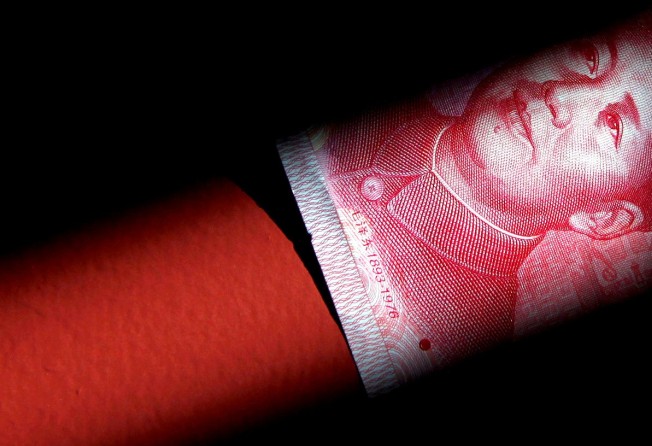China right at the core of the changing global currency constellation
The dollar’s dominance has faded in recent months, so is the time now right for China to take centre stage?

The US dollar may have previously been one of the brightest stars in the currency firmament, but recently it has waxed and waned.
Some currencies have shone more brightly while others continue to fade. “It is the time for divergence,” US firm Morgan Stanley wrote on Friday last week as the dollar “continues to develop a mixed performance”.
The currency markets will continue to closely watch events in the United States, and Friday’s upgrade to first-quarter US gross domestic product growth only reinforced the view that the Federal Reserve will raise interest rates again in June.
But there are other factors arguably also exercising a gravitational effect on currencies.
China is one such factor, given the size of its economy. Beijing is managing a variety of policy goals. A desire to transition from an export-led economic model to one driven by domestic demand combines with measures to address an over-expansion of credit. At the same time, Beijing is seeking to ensure the stability of the yuan ahead of China’s 19th Party Congress later this year.
China’s policies clearly have implications for other countries whose own economic interests have become closely aligned to a pace of Chinese economic expansion that Beijing is now seeking to pare back to a slower but more sustainable rate.
Ensuring the yuan remains stable also has potential implications for perceptions of other currencies. As Morgan Stanley wrote, “China is slowing down but its sealed capital account has reduced spillover risks”, though there is surely also an argument that the currencies of countries that might ordinarily have been recipients of capital outflows from China, have lost a pillar of support.
So long as investors have confidence in the stability of the yuan, or perhaps more specifically that it is not going to slide in value, investors might rationally have greater confidence in holding other Asian currencies.
Conversely, while capital coming out of China has long underpinned real estate demand in Hong Kong, it has also had a material impact in places such as Australia, Canada and New Zealand, in each case necessitating the exchange of yuan for Hong Kong, Australian, Canadian or New Zealand dollars, providing support for each.
There is surely an argument that the currencies of countries that might ordinarily have been recipients of capital outflows from China, have lost a pillar of support
If less Chinese capital is reaching those jurisdictions, one source of demand for those currencies is reduced.
That problem is exacerbated in places such as Australia by the fact that the fortunes of the economically significant Australian commodity exporting sector have become increasingly tied to demand from China.
Reductions in demand for imported commodities such as iron ore, as Beijing continues to work to realign the Chinese economy, are problematic for Australia and might well continue to weigh on the value of the Australian dollar.
As for Canada, with an oil-sands industry that has a relatively high cost of extraction, the fact that last week the Opec oil cartel extended its oil output curbs by nine months, should be good news for the Canadian dollar.

Yet will Opec’s output curb extension actually end up supporting the oil price?
On the supply side, US shale oil producers are not party to Opec’s decision while US President Donald Trump has proposed selling off half of the US strategic petroleum reserves, starting in November as the next US financial year begins.
Additionally with both Beijing and Washington moving to make monetary policy less accommodative, there has to be a potential knock-on effect on economic activity and thus on the demand for oil and the price per barrel.
With both Beijing and Washington moving to make monetary policy less accommodative, there has to be a potential knock-on effect on economic activity and thus on the demand for oil and the price per barrel
There is even been speculation that the European Central Bank may begin to unwind the ultra-easy monetary policy currently prevailing in the euro zone.
Indeed the euro has been one of the shining stars in the currency galaxy in recent months as economic data has shown improvement at the same time as market participants have grown more cynical about prospects for the greenback.
Of course it could be argued that better euro-zone economic performance has partly been built on the foundations of a prior weakness of the euro that has now been partially unwound. One big question is whether the euro zone as a whole can continue its recovery when the price of its currency has risen.
But one thing’s for certain.
Whoever else is tightening monetary policy, Japan is not. It is crucial “to patiently maintain our monetary easing”, Bank of Japan board member Makoto Sakurai said last week.
Traders might conclude that selling the yen to fund other currency purchases remains a viable proposition.
Either way, the stars in the currency firmament seem to be realigning. Divergence is here.